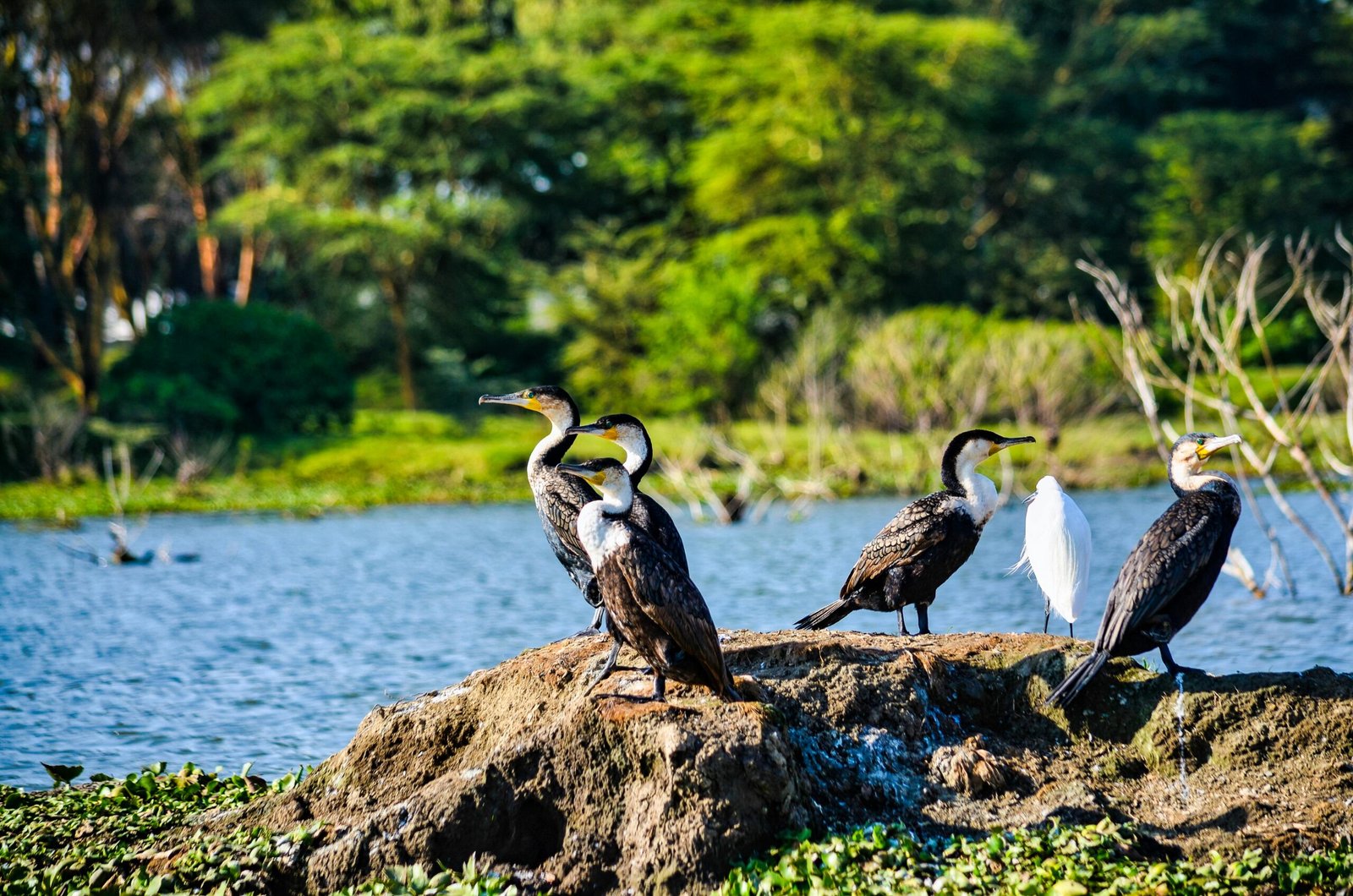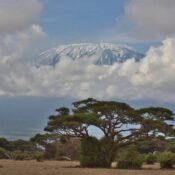
Birdwatching in Tanzania: Top Spots and Species
Tanzania is not only famous for its dramatic landscapes and the iconic Great Migration it’s also one of Africa’s most rewarding birdwatching destinations. With over 1,100 recorded bird species, including 29 endemics, Tanzania offers a diverse range of habitats, from the Serengeti plains and tropical coastlines to montane forests and the Rift Valley lakes. Whether you’re an avid birder or a curious traveler with binoculars in hand, Tanzania’s avian wonders promise an unforgettable experience.
In this guide, we’ll explore the best birdwatching spots across Tanzania and highlight the top species you should keep an eye out for.
Why Birdwatch in Tanzania?
- Biodiversity Hotspot: With diverse ecosystems, Tanzania supports a wide variety of bird species year-round.
- Rare and Endemic Birds: Home to endemic species such as the Udzungwa Forest Partridge and the Pemba Green Pigeon.
- Accessible Birding: Many birding spots are easily accessible and close to major safari circuits.
- Great for All Levels: Whether you’re a beginner or seasoned birder, Tanzania caters to all with expert guides and well-maintained parks.
Top Birdwatching Spots in Tanzania
1. Serengeti National Park
Serengeti is not only a haven for wildlife lovers but also a birdwatcher’s paradise. With over 500 species recorded, the park offers excellent birding throughout the year.
Birds to Spot:
- Kori Bustard (the heaviest flying bird in Africa)
- Secretary Bird
- Fischer’s Lovebird (near-endemic)
- Grey-breasted Spurfowl
The Seronera region is especially productive for raptors, hornbills, and various grassland species.
2. Ngorongoro Crater
A UNESCO World Heritage Site, the Ngorongoro Crater is known for its unique ecosystem and high bird density.
Birds to Spot:
- Lesser Flamingos (at Lake Magadi)
- Verreaux’s Eagle
- Augur Buzzard
- Rufous-tailed Weaver (endemic)
The varied habitats within the crater — from lakes to forests — make it easy to see dozens of species in a single outing.
3. Lake Manyara National Park
Lake Manyara’s alkaline lake, woodlands, and floodplains support over 400 species of birds.
Birds to Spot:
- Pink-backed Pelican
- Yellow-billed Stork
- African Fish Eagle
- Silvery-cheeked Hornbill
The highlight here is witnessing flocks of flamingos that turn the lake into a sea of pink during peak seasons.
4. Tarangire National Park
Famous for its baobab trees and elephant herds, Tarangire also offers excellent birdwatching, especially during the dry season when water sources attract diverse species.
Birds to Spot:
- Yellow-collared Lovebird (endemic)
- Red-and-yellow Barbet
- Ashy Starling
- Martial Eagle
Over 500 species have been recorded here, making it a top birding destination in northern Tanzania.
5. Ruaha National Park
Remote and less visited, Ruaha boasts a combination of acacia woodlands, riverine areas, and open plains, ideal for birdwatching.
Birds to Spot:
- African Fish Eagle
- Racket-tailed Roller
- Dickinson’s Kestrel
- White-bellied Go-away-bird
Ruaha is particularly rewarding for raptor lovers with over 70 species of birds of prey.
6. Usambara Mountains
The Eastern Arc Mountains are one of the most important areas for endemic birds in Tanzania. The Usambaras are rich in forest species rarely seen elsewhere.
Birds to Spot:
- Usambara Akalat (endemic)
- Usambara Weaver (endemic)
- African Tailorbird
- Bar-tailed Trogon
A guided trek here offers the best chances to spot these rare forest dwellers.
7. Udzungwa Mountains National Park
Often called the “Galápagos of Africa,” Udzungwa is known for its unique species and montane forest habitat.
Birds to Spot:
- Udzungwa Forest Partridge (endemic)
- Olive-flanked Robin-chat
- Sharpe’s Akalat
- Livingstone’s Flycatcher
The park is ideal for birders interested in deep forest species and endemics.
8. Pemba Island
Pemba, located off the northern coast, is lush and relatively untouched, offering excellent birding opportunities for island endemics.
Birds to Spot:
- Pemba Scops Owl (endemic)
- Pemba Green Pigeon (endemic)
- Pemba Sunbird (endemic)
- Crab Plover (along coastal areas)
A boat ride to Pemba is a treat for both birders and nature lovers looking for off-the-beaten-path experiences.
9. Arusha National Park
Close to the city of Arusha, this park is perfect for a quick birding stop and boasts a surprising variety of habitats: lakes, forests, and open grasslands.
Birds to Spot:
- Narina Trogon
- Hartlaub’s Turaco
- African Crowned Eagle
- Tawny-flanked Prinia
Momella Lakes within the park attract large flocks of flamingos and waterbirds.
10. Selous Game Reserve (now Nyerere National Park)
Selous is one of the largest protected areas in Africa and offers an authentic birding experience with boat safaris and walking tours.
Birds to Spot:
- Pel’s Fishing Owl
- African Skimmer
- Böhm’s Bee-eater
- White-fronted Bee-eater
The Rufiji River system supports a rich wetland ecosystem that teems with birdlife.
Best Time for Birdwatching in Tanzania
While birding is great year-round, the best months are:
- November to April: This is the breeding season and also when migratory birds from Europe and Asia arrive.
- June to October: Drier months with easier access to remote areas, though fewer migrants.
Endemic Birds of Tanzania to Watch For
Tanzania is home to numerous endemic and near-endemic birds. Don’t miss these:
- Udzungwa Forest Partridge
- Rufous-tailed Weaver
- Ashy Starling
- Pemba Scops Owl
- Kilombero Weaver
- Usambara Akalat
Spotting an endemic is a highlight for any serious birder and adds a special touch to your Tanzanian adventure.
Tips for Birdwatching in Tanzania
- Hire a Local Bird Guide: Their expertise will increase your chances of seeing rare species.
- Bring the Right Gear: A good pair of binoculars and a field guide to East African birds are must-haves.
- Dress Appropriately: Neutral colors, lightweight clothing, and insect repellent are essential.
- Be Patient and Quiet: Many birds are shy, especially in forested areas.
- Travel Responsibly: Respect park rules, stay on trails, and avoid disturbing nesting sites.
Combine Birdwatching with Safari
The beauty of birdwatching in Tanzania is that it can be combined effortlessly with a wildlife safari. From lions lounging under acacia trees to flamingos wading in alkaline lakes, your trip becomes a multi-dimensional nature experience.
Conclusion
Tanzania’s birdwatching scene is as vibrant and varied as its landscape. Whether you’re standing by Lake Manyara watching flamingos take flight or trekking through the misty Usambara Mountains in search of endemics, the birding experience here is nothing short of magical.
With expert local guides, rich biodiversity, and stunning scenery, birdwatching in Tanzania should be on every nature lover’s bucket list. Pack your binoculars and get ready for an avian adventure you’ll never forget.




